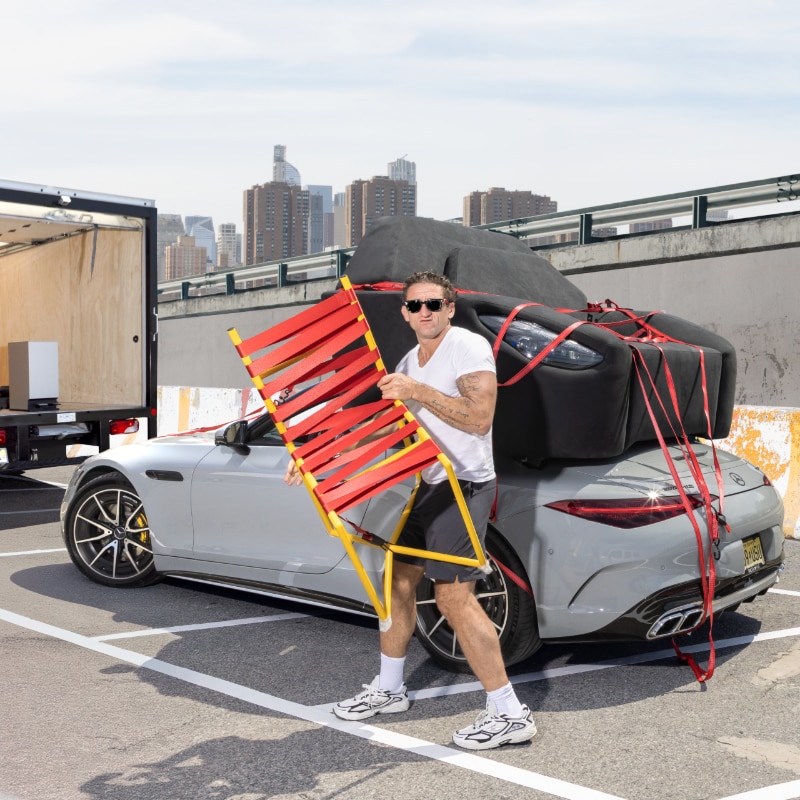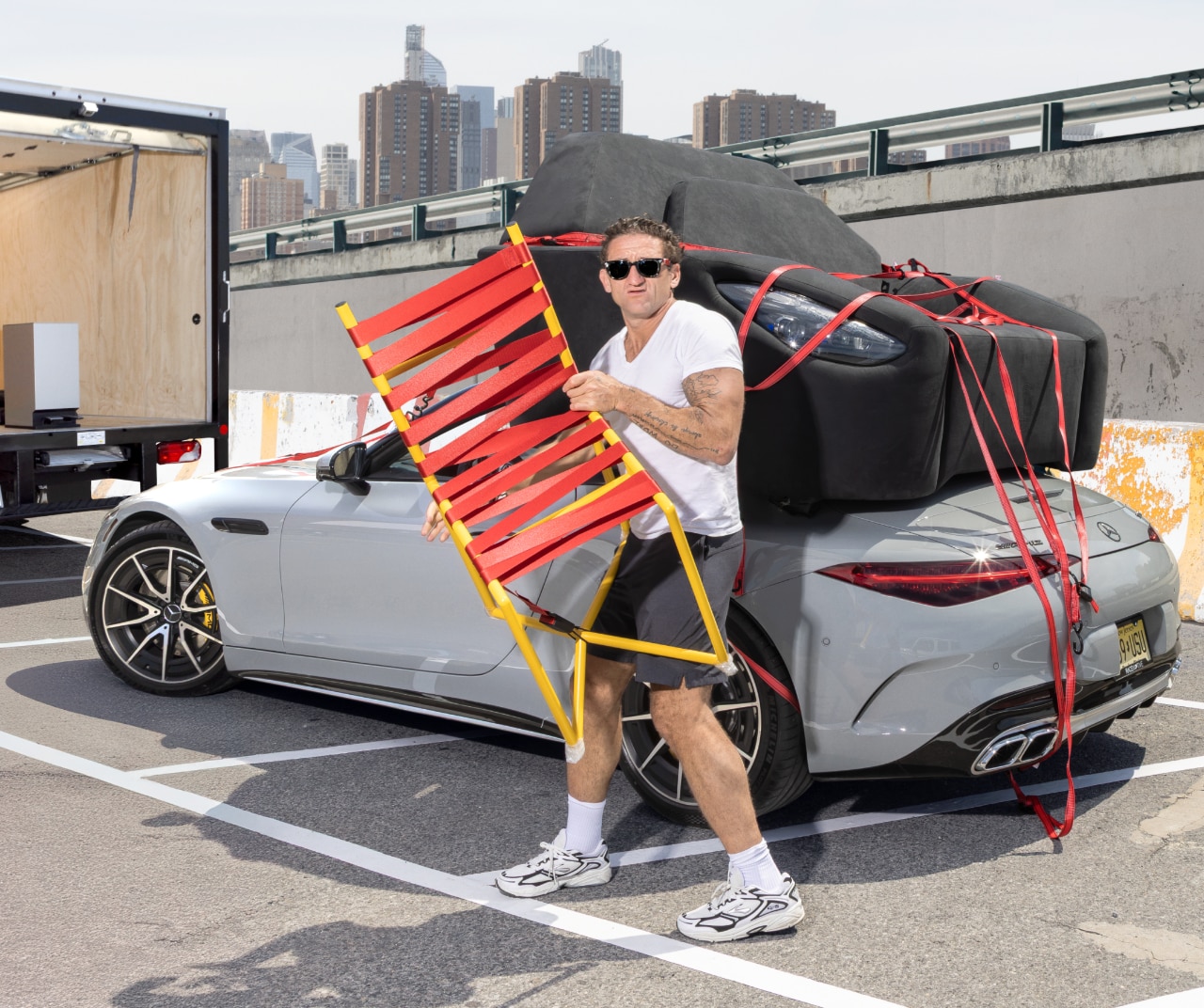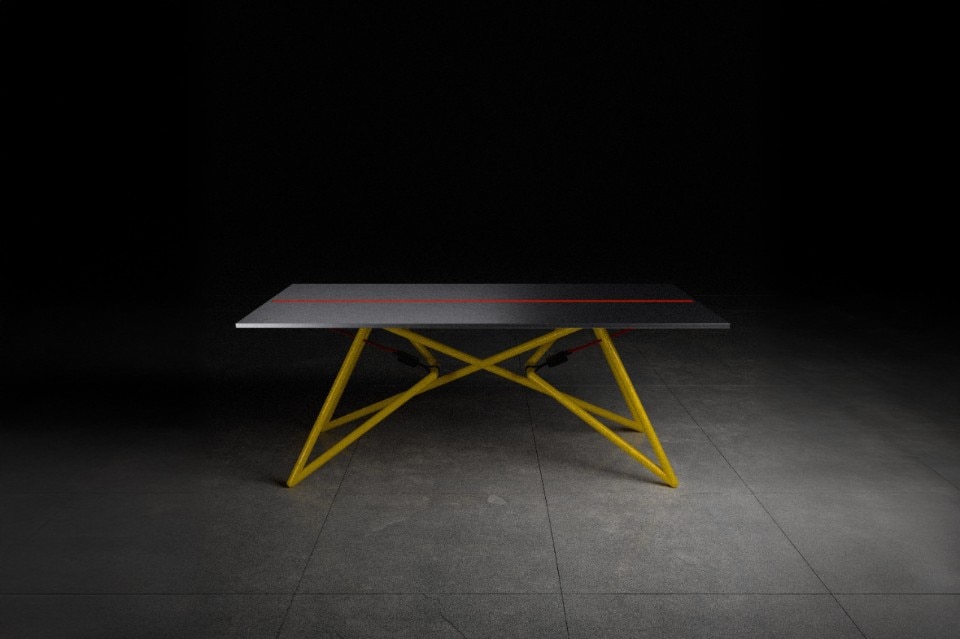“They reached out to us from AMG; the initial contact was to design a car,” explain Kevin Wiesner and Lukas Bentel, co-founders of MSCHF, the Brooklyn art collective that, in less than a decade, has garnered significant attention for its bold, provocative, and radically critical projects. Unsurprisingly, an important essay in Made by MSCHF, the recently published Phaidon tome dedicated to their work, was written by Maurizio Cattelan. When the high-performance division of Mercedes contacted them, MSCHF had only existed for five years. “And designing a car would have taken another five,” they explain. “It seemed like too much. So we proposed making a furniture collection instead.”
This isn’t MSCHF’s first project involving cars. Key4all (2022) was a social and artistic experiment and remains one of the collective’s most significant. MSCHF sold a thousand keys—but they all opened the same car parked somewhere in New York. There was a hotline that provided information on the vehicle’s location, which any of the thousand key holders could call. The idea was, of course, a critique of ownership, but also of the concept of sharing that’s become common with services like Uber. When I ask Wiesner and Bentel if they drive, they look at me confused and smile. “No one wants to drive in New York,” they laugh.
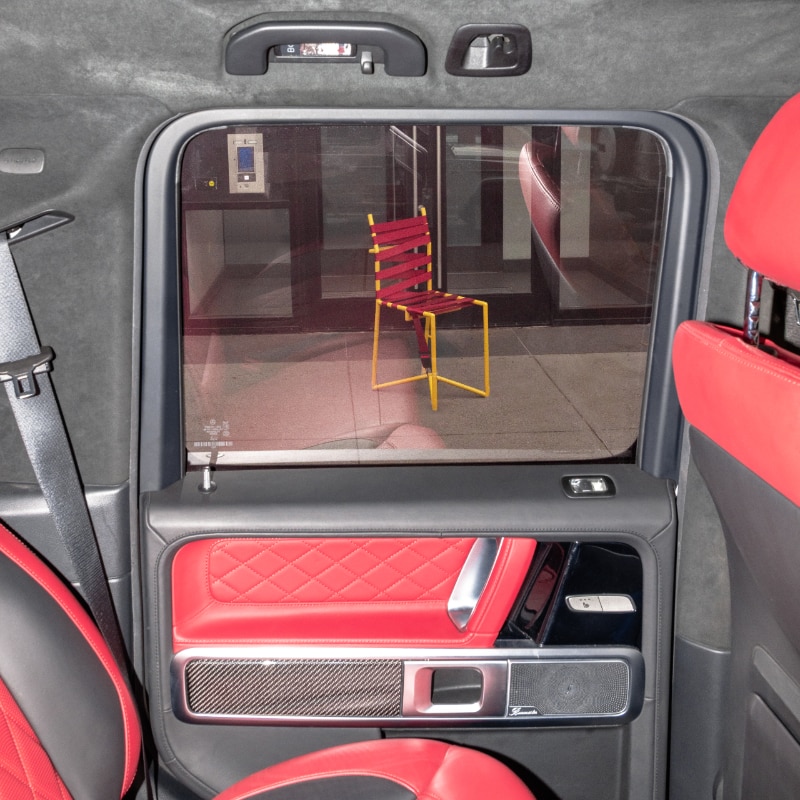
A car? No thanks—we’d rather make a chair
The spiritual godfather of the new AMG × MSCHF project, titled “Not for Automotive Use”, is Achille Castiglioni—“who incorporated industrial parts into his designs,” Bentel explains. Both he and Wiesner studied industrial and furniture design. After their past collaboration with Gufram this is MSCHF’s first complete collection. Unforgettable pieces like Sella and Mezzadro, designed by Achille with his brother Pier Giacomo, are the most obvious inspirations for the American collective—furniture that repurposes parts from bicycles and tractors into domestic objects with a radical, unadorned aesthetic.
MSCHF, however, goes one step further. Bentel and Wiesner invite me to sit on the HeadrestChair, arguably the most significant piece in the collection. It’s a surprising seat because it lacks the part everyone considers essential: the surface on which to rest “the butt” (a term we feel free to use here because it appears in NYC subway ads by the MTA). And yet, the chair is incredibly comfortable and inviting. It was built using three car headrests and a structure of yellow-painted metal tubing—two materials that reflect the approach behind the entire collection.
The pieces in “Not for Automotive Use” incorporate a wide variety of AMG car parts. These were selected after painstaking research through the brand’s online spare parts catalog. “The problem was, they didn’t list the dimensions,” says Wiesner. So when the parts arrived at their studio, located between Williamsburg and Greenpoint, they realized many didn’t fit. “We wanted to make a fan using a part that turned out to be way too small—it would’ve barely worked for a handheld fan.” The fan was eventually completed and named Wheelfan—built using a wheel rim and seatbelts as key elements.
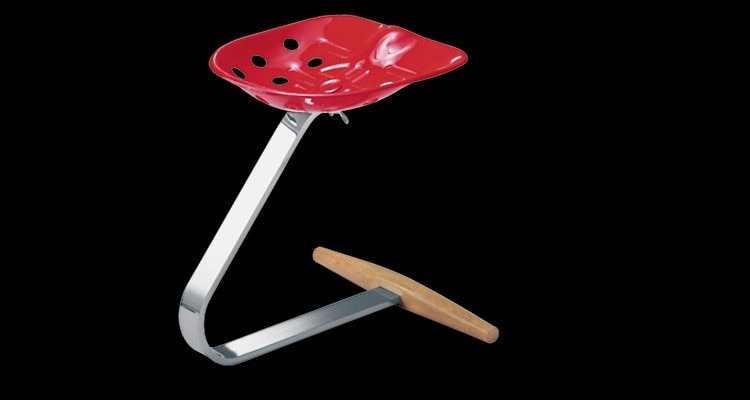
The seatbelt as switch, the retractor as base
The seatbelts—featuring AMG’s signature red, yellow, and black—appear in many of the collection’s pieces, from tables and shelves to chairs (SeatbeltTable, SeatbeltChair—the names say it all). In the SeatbeltLight, the belt buckle serves as the switch, while the retractor cylinder becomes the lamp’s base.
Seatbelts play a central and recurring role, just like the brightly colored tubes borrowed from race car design, Bentel and Wiesner explain. These tubes reference the roll cage—“the structure that protects the driver in the event of a rollover,” Bentel notes. “They’re often painted in bright colors like yellow or blue.” That inspired the use of vividly colored tubing as the backbone of many of the displayed works.
“There aren’t many trash bins you can use without touching them,” says Wiesner, pointing to PedalTrashcan, the junk bin included in the collection. “It took some effort to convince AMG,” they add—explaining that the brand had only one condition for the collaboration: no toilets. Given MSCHF’s history, that wasn’t an unreasonable ask.
Mschf × brands: love and disobedience
How do you work with a brand is, of course, the silent guest of Domus conversation with Bentel and Wiesner at their Brooklyn office, that happens during the Friday opening of the collection, which coincided with NYCxDESIGN—the city’s official design week.
“The first physical object we ever made was tied to a brand,” says Bentel, referring to the Jesus Shoes, a pair of customized Air Max 97s filled with holy water. “It’s something you could just buy online from a reseller,” adds Wiesner. That wasn’t an official collaboration—and the follow-up Demon Shoes, made with Lil Nas X, led to a lawsuit from Nike. The inclusion of a drop of human blood didn’t go over well with the company in Beaverton. “We’re still not on good terms,” Wiesner comments dryly. That whole episode says a lot about MSCHF—a collective that has always worked at the intersection of art and design, placing a strong emphasis on brands, something that likely makes certain corners of the art world uncomfortable. “Brands are a huge part of our imagination and our culture. For us, they’re a key reference point,” Bentel explains. “And if we can create something interesting together, like this, why not?”
In the Brooklyn studio/garage/showroom exhibition, two pieces stand out for their scale and positioning—both of which will remain one-offs and not enter limited production. One is the sofa, which may become the collection’s symbol: its shape echoes that of an AMG car, complete with working headlights that can be turned on from behind. “It was very complicated to make,” notes Wiesner. The other is a metal barbecue grill—the collection’s only outdoor furniture piece. It’s a nod to American backyard culture, but also to the automobile grille, which for years was a defining design element of gas-powered cars—but has become useless in electric vehicles. “One of the cars we’ve got here still has one—but it’s totally electric. The grille is just symbolic,” says Bentel.
In addition to the furniture, MSCHF also created a series of T-shirts and apparel. Their next big project is an exhibition opening in July at the massive Pioneer Works space in Red Hook, south Brooklyn. “Not quite site-specific one, but close,” say Bentel and Wiesner. They don’t reveal much more. Meanwhile, it’s started to rain, and my Uber is waiting outside.
